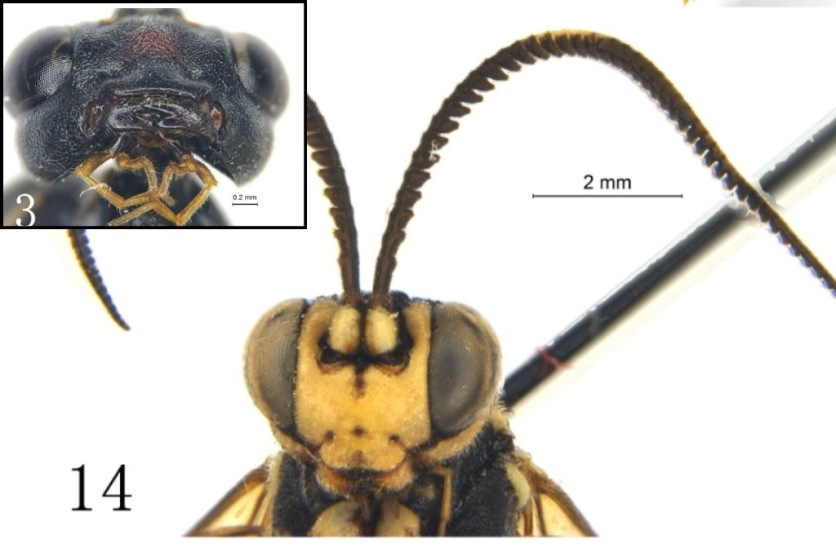In the depths of a lush forest in Guangzhou, China, a team of scientists made a groundbreaking discovery that has unveiled a new chapter in entomology.
Equipped with nets and unwavering curiosity, researchers ventured into the heart of nature, leading to the capture of an enigmatic creature-a new species of parasitic wasp.
The remarkable finding, detailed in a study published recently in the European Journal of Taxonomy, marks the introduction of Serratichneumon maculatus, a spotted parasitic wasp, within the annals of scientific discovery.

A Closer Look
Measuring at approximately 0.5 inches in length with wings slightly shorter than its body, the spotted parasitic wasp flaunts a striking appearance.
This report shared by Phys.org tells us that its black body adorned with distinctive, drop-shaped patches-large and painted in hues of white and red-drew immediate attention. Complementing this intriguing body are reddish-brown legs, making this species a spectacle in the world of entomology.
What truly sets this species apart are its facial features-flat and hosting a peculiar oral structure housing two distinctly separated teeth. A closer examination of its wings reveals a translucent yellow hue, interlaced with dark brown veins, giving them a glossy, almost ghostly quality.
The discovery of Serratichneumon maculatus adds a captivating dimension to the understanding of parasitic wasps. The uniqueness of its physical attributes, particularly the odd dental configuration and leaf-like antennae of the males, has captivated researchers.
One of the mysteries surrounding this newfound species revolves around its host animal. Despite rigorous investigation, scientists have yet to pinpoint the specific species it preys upon. However, based on its anatomical features, researchers speculate a potential link to certain butterfly or moth larvae.
Further enriching our understanding of biodiversity, this species is not confined solely to the Chinese landscape. It has also been spotted in Vietnam and Indonesia, expanding its known geographical distribution.
New Species
Named in honor of its distinctive markings, Serratichneumon maculatus represents more than just a novel find. It spearheads the establishment of a new genus, Serratichneumon, within the Ichneumonidae family.
Researchers, despite not conducting a DNA analysis, utilized meticulous physical examination and comparison to known species to carve its place in taxonomic classification.
While this discovery is a testament to the marvels of the natural world, questions linger. The absence of DNA analysis leaves room for further exploration into its genetic makeup and evolutionary history.
The team, comprised of researchers Mao-Ling Sheng, Matthias Riedel, and Zhong Wang, stands at the forefront of this pioneering discovery.
The discovery of Serratichneumon maculatus serves as a beacon, reminding us of the vastness of uncharted territories within our natural world. Its striking features and mysterious existence in the forest canopy of China paint a vibrant picture of the hidden creatures awaiting discovery.
Stay posted here at Tech Times.
Related Article : Pesticide Inactive Ingredients Toxic for Bees, Latest Study Warns

ⓒ 2026 TECHTIMES.com All rights reserved. Do not reproduce without permission.




